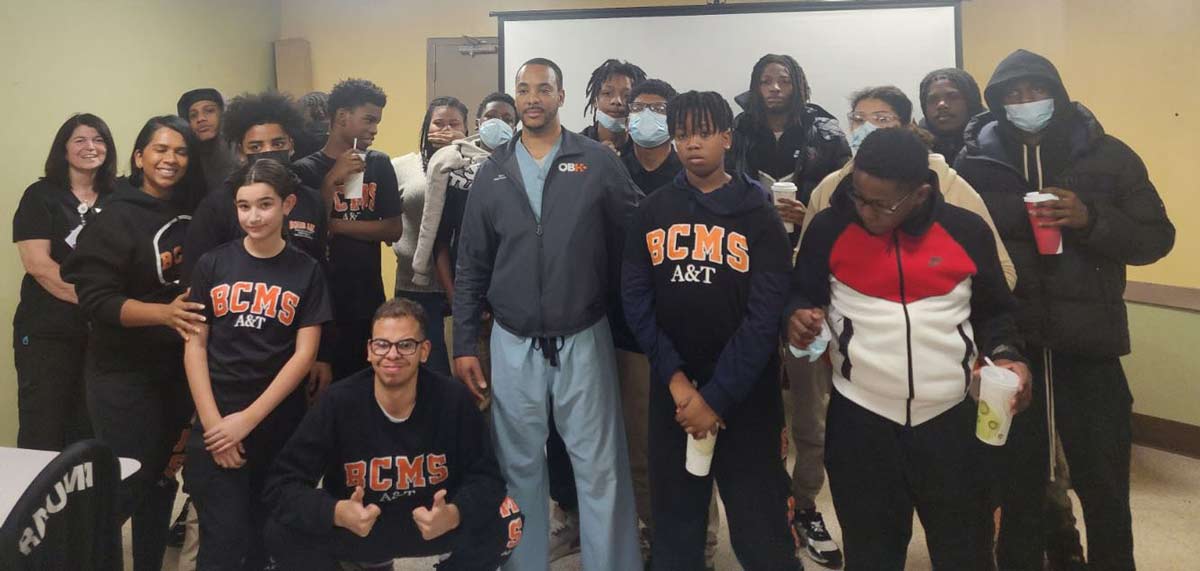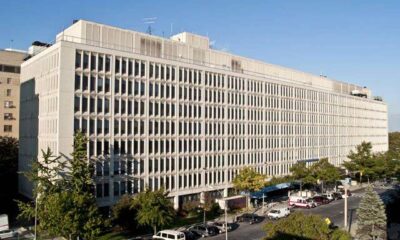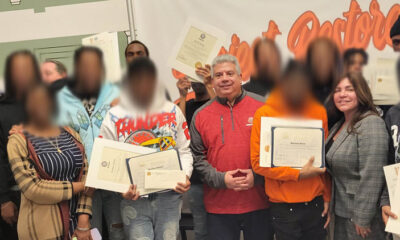Education
Surgeon Brings Anti-Gun Message to Brownsville Students

By Mary Alice Miller
A group of students from Brownsville Collaborative Middle School and Brownsville Community Justice Center had the rare opportunity to engage with Dr. Roy Lacey, one of Brookdale Hospital’s trauma surgeons.
The students ages 11-22 asked Dr. Lacey about how to become a doctor and his day-to-day experiences.
Dr. Lacey, age 37, told the students he knew he wanted to become a doctor at age 10. First in his family to become a doctor, Dr. Lacey said his family provided a strong support structure. “In school sometimes they may tell you that’s a long road, that’s hard to do.
They may tell you that you may want to become a physician assistant or nurse instead,” said Dr. Lacey. “But my parents told me if this is what you want to do, then go for it.”
He went into high school knowing what he wanted to do and gravitated toward the life sciences. When he dissected a frog, Dr. Lacey knew that was what he wanted to do for the rest of his life. Dr. Lacey told the students to “Read a lot. It doesn’t necessarily have to be medical things. Just read. Read for fun.
Get used to it because there will be a lot of reading for the amount of school you have to do.” Dr. Lacey also played video games to train his hands.
Dr. Lacey made the decision to specialize in trauma during training. He added, “The desire has to be there. It is a long road. But it is worth it.”
The students asked a lot of questions. How long have you been a doctor? Can mental trauma physically affect the body? What happens if you get shot or stabbed and you get air in your wound? What is the most tragic thing you have seen as a doctor? What happens if you get shot in the genital parts? What does spreading the ribs do to the body?
Dr. Lacey’s presentation included a slide show of graphic and sometimes gruesome gunshot injuries in various parts of the body: the brain, neck, chest, abdomen, and thighs.
“The most common cause of death from toddler to middle-aged adult is trauma, unintentional injury,” said Dr. Lacey. “The reason why we are here is to try to prevent that.”
When someone comes to the hospital Dr. Lacey said, “We do whatever we can to help them. We have all the facilities you need to take care of a critically wounded person. We have trauma surgeons like me on call, we have specialist doctors like vascular for bleeding, and we have brain surgeons for gunshots and skull fractures. We have set up very specific protocols and services to help a critically injured patient.”
Sadly, he added, “The fact remains 30-60% of patients who suffer injuries die before they even get to the hospital. So a lot of times they come in and there is really nothing I can do and I have to pronounce them as soon as they get here.”
Dr. Lacey emphasized that “Prevention is the best course of action.”
The students were fascinated by pictures of an open chest with a doctor’s hands around the heart to manually pump it.
One student said, “You held their heart? You feel somebody’s life in your hands.” Another student asked “What does it feel like?” And yet another student asked, “You can cut somebody’s chest open in 20 seconds?”
Dr. Lacey explained that the heart feels like a muscle that is empty on the inside. He told the students that manually pumping someone’s heart is a “dire circumstance.
If you have to open somebody’s chest in the emergency room, that is because that person has already died and you are trying to bring them back to life. And even if you get the heart beating again then they still have to recover.”
The students were told of courses of action to address serious trauma injuries, like sewing closed a hole in the small intestines or attaching a colostomy, dealing with serious infections, applying a shunt as a bypass between two parts of an injured artery, or using catheters.
“The bottom line is,” said Dr. Lacey, “don’t get shot.”
The program called “It Starts Here” is a Brookdale Hospital initiative to reduce gun violence and its negative effects on the community. It Starts Here educates young people on the real-life consequences of firearms and blunt trauma.
Judith Lussier, PA-C, Dept. Of Surgery presented Stop the Bleed, Save a Life, a hands-on presentation during which groups of students used a model to learn how to apply pressure or a tourniquet to curtail bleeding until medical can be obtained. Each of the students received a Stop The Bleed certificate of completion.
Central Brooklyn Economic Development Corporation partnered with Brookdale to provide ongoing mentors and internship opportunities to save lives. The students explore career interests and interact with guest speakers. High school students can volunteer at the hospital or work there through the Summer Youth Employment Program.
The Brownsville Collaborative Middle School students were accompanied by Ms. Francina Drepaul (social worker) and Tanjanique Williams, a BCMS alumni who works at the school as a paraprofessional.













